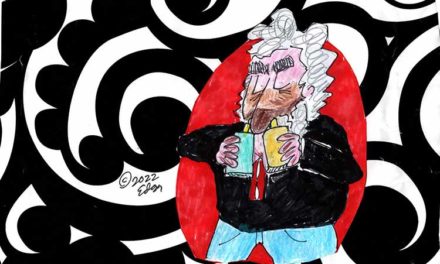New York City Has a Rat Tzar: Are You Jealous, Other Cities?
And no, they don’t call her the Big Cheese
By Ed Goldman
New York, the quaint island village of my birth, appointed its first Rat Tzar this past Spring (Summer began today if you weren’t cc’ed on the advisory).
I think it was long overdue. In a city of such magnificent diversity, rodents had been one of the last remaining populaces without representation. Still, it troubles me that the first Rat Tzar isn’t an actual rat.
Losing the rat race
Did anyone even place a courtesy call to Chuck E. Cheese?
As CNN reported, Kathleen Corradi was hired as the city’s Director of Rodent Mitigation, a job title I’m sure that, as an ambitious and hard-working college student, she dreamed of one day putting on her résumé. Right up there with Lifeguard at Don’s Discount Carwash and Skindiver for Roto-Rooter.
Corradi’s charge is to find “innovative ways to cut off rats’ food sources” per a news release from the office of Mayor Eric Adams. Of course, to accomplish that, you’d need to eliminate every restaurant, bar, home kitchen and kid’s lunch box in Gotham.
But wait. There’s more: “The city also announced the creation of a ‘Harlem Rat Exclusion Zone’” that covers much of the northern half of Manhattan, where $3.5 million will be spent to improve and increase inspections, use equipment such as bait and traps, and harden floors at some public housing to prevent rat burrowing.”
(Full disclosure: Harlem’s the actual part of that quaint island village where I was born. While this has nothing to do with today’s column, I just love typing “full disclosure.” Also “be that as it may,” “as it were” and “would that I could” but the chance to use those don’t pop up as often.)
In a moment of unexpected whimsy, CNN went on to say, “It’s unclear exactly how many rats call New York City home.”
So here we have a cable network that prides itself on journalistic excellence, a notable exception being Don Lemon, anthropomorphizing parasitic, disease-toting rodents. Look, I don’t think any rats “call New York City home.” This is simply not a species given to making calls, taking business trips, doing corporate re-los or jumping into spontaneous diasporas.
Rats no sooner call anything home than they call a taxi, call out for a pizza or call me irresponsible.
CNN again: “An oft-repeated urban legend tells us that the city has more rats than people (or over 8 million). But a 2014 study … based on rat sightings…estimated that there were only around two million rats in the city.”
Well, that’s a relief. Only one-fourth of the city’s population consists of rats. But does this mean that every fourth mammal you pass on Fifth Avenue may be on its way to a committee meeting to organize a plague?
For our readers in states other than California (about 30 percent) and countries other than the U.S. (about 32, and that’s not a percentage), please don’t think we’re immune to the rat problem out here on the nation’s left coast. In fact, we have two main types of rats out here, according to the California American Exterminator’s website: the Roof Rat and the Norwegian Brown Rat.
In dealing with the former, many of us slide into denial, preferring to insist it’s a delicious spring rain tap-tap-tapping on the shingles when we hear scampering above our ceilings. As for the latter, my sense is that we’d immediately recognize the sound of a Norwegian rat, especially if it’s wearing wooden clogs and a Valkyrie helmet.
This past Winter I heard rats cavorting in the walls of my TV room on stormy nights. I imagined they were snacking and cuddling and listening to the movies I was watching, as if they were old-time radio shows. I just decided to leave them be and co-exist. They seem to have left when the weather warmed up. I guess they no longer called this home.
Ed Goldman's column appears almost every Monday, Wednesday and Friday. A former daily columnist for the Sacramento Business Journal, as well as monthly columnist for Sacramento Magazine and Comstock’s Business Magazine, he’s the author of five books, two plays and one musical (so far).
Yes, Virginia
A Weekly Blog by Virginia Varela
President, Golden Pacific Bank, a Division of SoFi Bank, N.A.
photo by Phoebe Verkouw
GIVING CREDIT WHERE (AND WHEN) CREDIT WAS DUE
I recently returned from a vacation in Portugal and Spain where I strapped on a backpack and hiked more than 270 kilometers following the “Camino,” an ancient route known by European Christians since 44AD.
The route originated with medieval pilgrims coming from all across Europe, their destination being Santiago de Compostela, Spain. This is allegedly where the remains of Saint James are stored in a crypt.
Along the way I had the opportunity to learn more about the history of medieval monetary systems, both from local museums and the review of a fascinating article by historian John Steele Gordon published in the May-June 2023 issue of American Bankers Association Banking Journal.
The Western Roman Empire largely practiced bartering as a means of exchange, but the minting of coins increased toward the end of the first millennium. Mr. Gordon noted that after the First Crusade in 1095 there was an increase in pilgrims—and without protection outside of large cities, “pilgrims were often attacked by brigands. To help resolve this problem, in 1119, King Baldwin II of Jerusalem established a military monastic order to protect the pilgrims.”
This new order was the Knights of Templar.
People heading to the Holy Land used to have their property managed by the Order while they were away. But beginning in 1150, pilgrims could deposit sums of money with the Templars and receive in exchange what today we call “letters of credit.” Once in the Holy Land, the pilgrims would redeem the money.
“This, of course, made them a much less attractive target for the local bandits,” Mr. Gordon explained.
And This is how pilgrims and the Knights of Templar helped create some of the framework for our banking system today.
sponsored content













